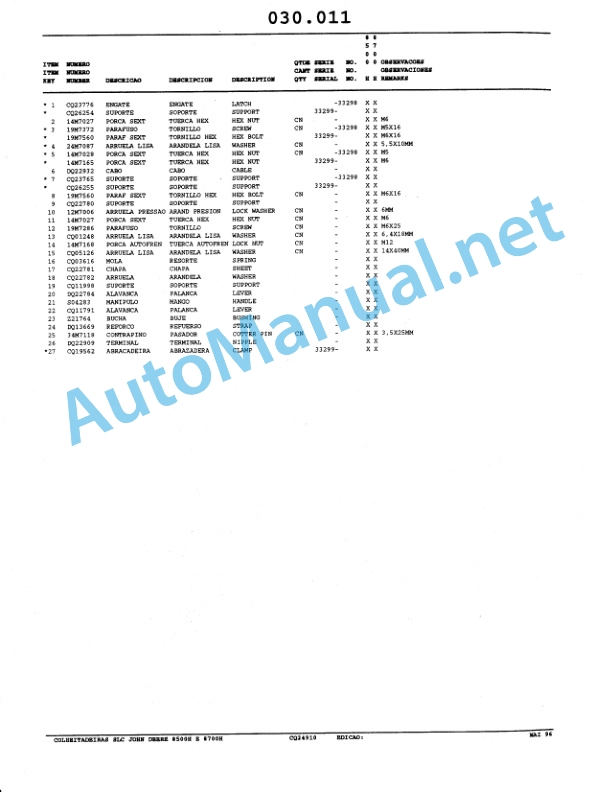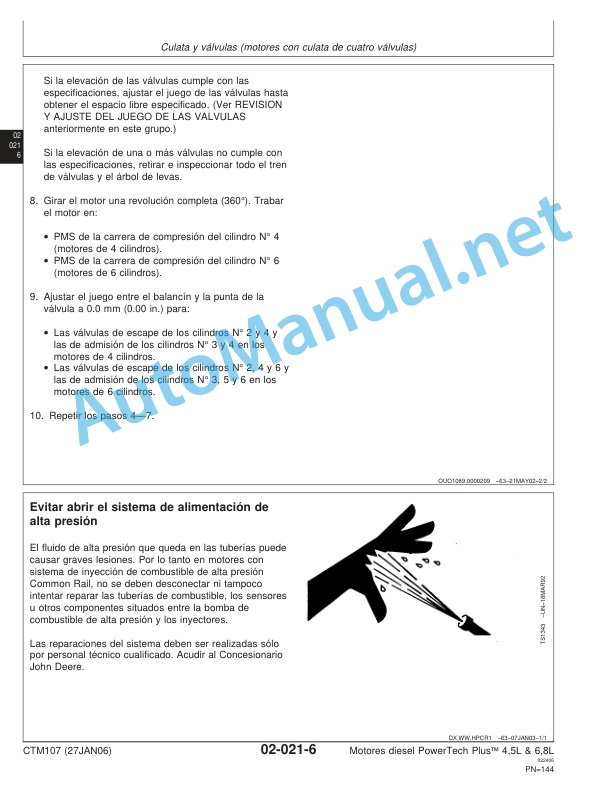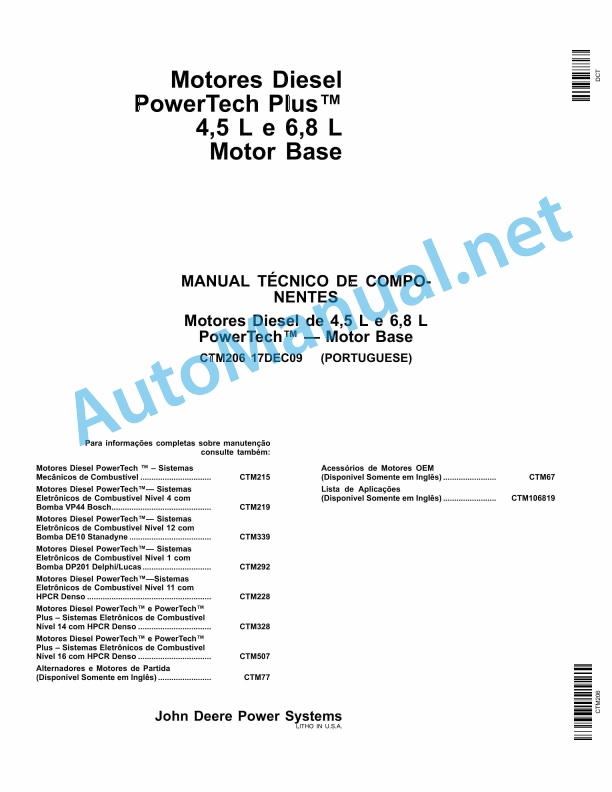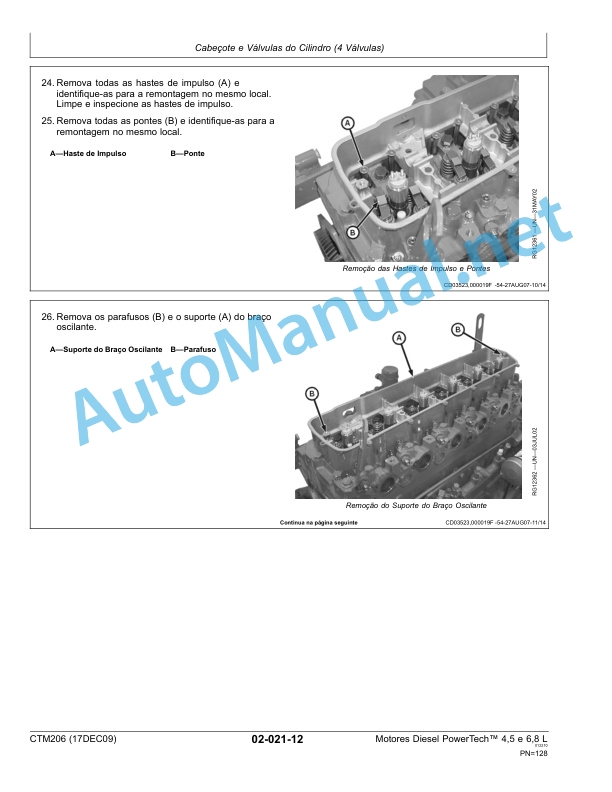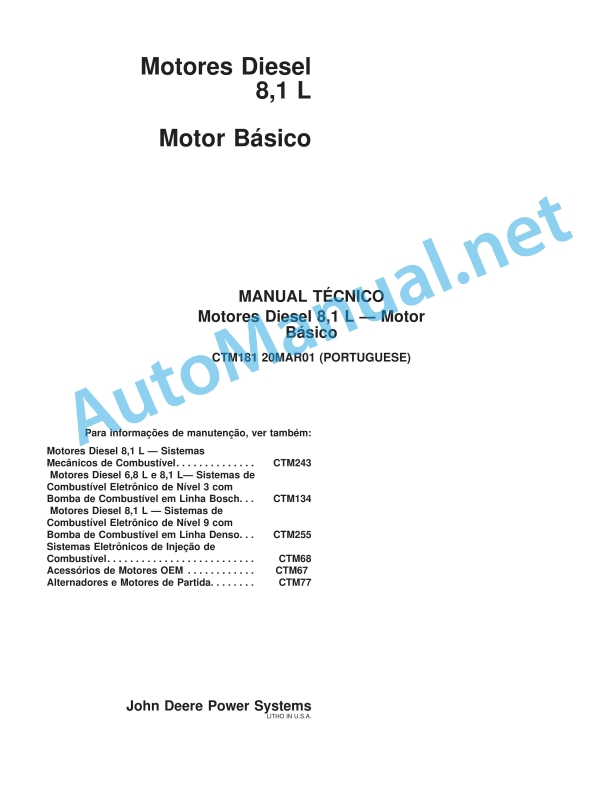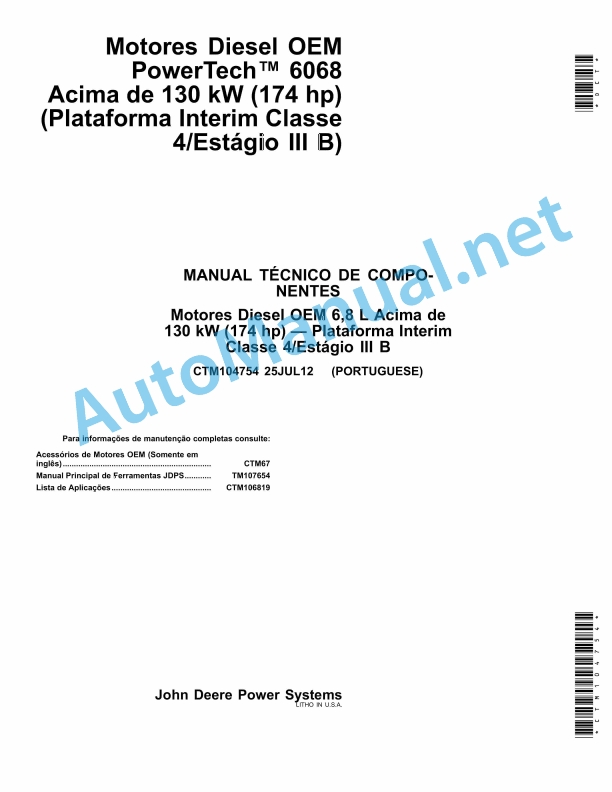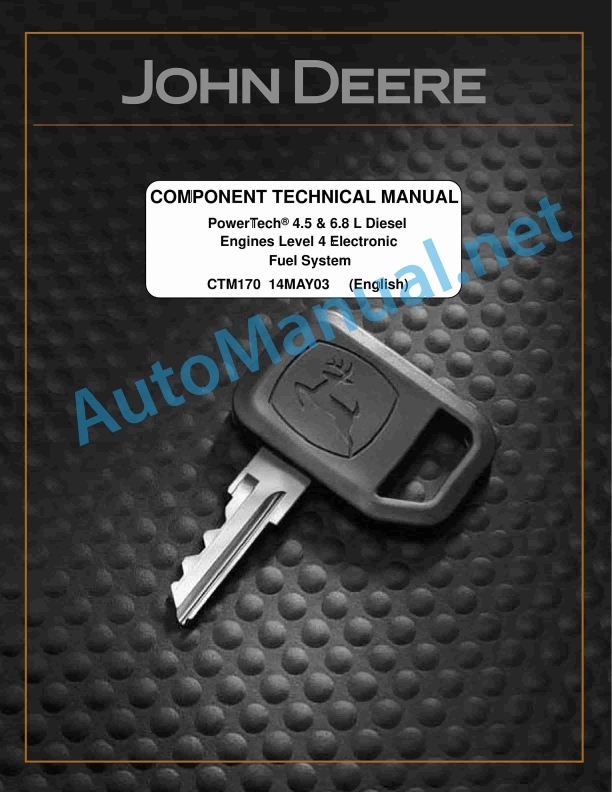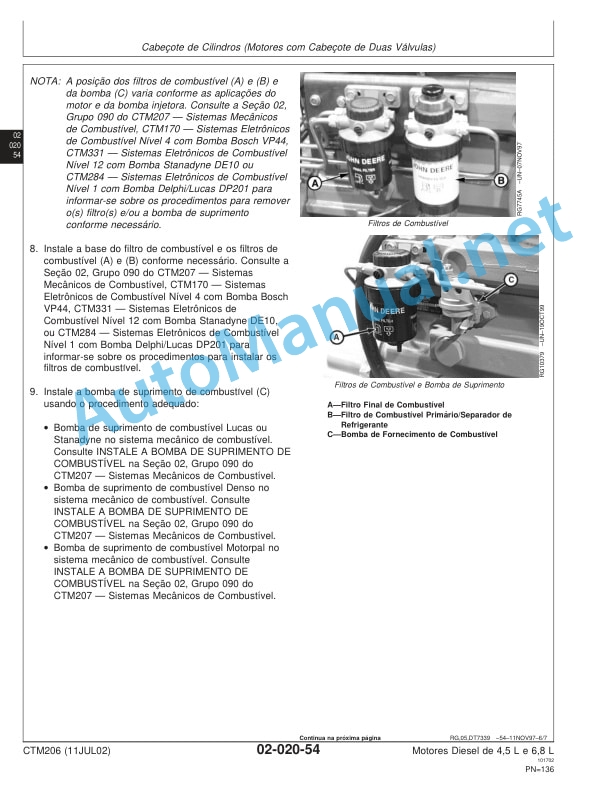Claas Arion 430-410 (A21) Tractors Operator Manual ES
$50.00
- Model: Arion 430-410 (A21) Tractors
- Type Of Manual: Operator Manual
- Language: ES
- Format: PDF(s)
- Size: 53.0 MB
File List:
00 1140 877 0.pdf
00 1170 297 2.pdf
00 1171 316 0.pdf
00 2182 132 0.pdf
00 2182 368 0.pdf
00 2238 827 1.pdf
00 1170 297 2.pdf:
AXION 900-800ARION 600-500-400
1. Introduction
1.1 Information regarding the instruction manual
1.1.1 Application of this manual
2 Prepare the tractor
2.1 Assembly and body parts
2.1.1 Legal equipment according to regulation (EU) 167/2013
Tractor with a length greater than 4.6 m: AXION 900, AXION 800, ARION 600 and ARION 500
Tractor with a total width greater than 2.55 m: AXION 900, AXION 800, ARION 600 and ARION 500
CIS tractor with a total width greater than 2.82 m and CEBIS tractor with a total width greater than 2.75 m: AXION 900, AXION 800, ARION 600 and 500
Tractor with a total width greater than 2.55 m: ARION 400
Tractor with a total width less than 2.55 m: ARION 600, 500 and 400
CIS tractor with an overall width of less than 2.82 m: AXION 900, AXION 800, ARION 600 and 500
CEBIS tractor with a total width of less than 2.75 m: AXION 900, AXION 800, ARION 600 and 500
Extension of signage posters
00 1171 316 0.pdf:
AXION 900-800 CEBISARION 600-500 CEBIS
1. Introduction
1.1 Information regarding the instruction manual
1.1.1 Application of this manual
2 Control and display instruments
2.1 CEBIS
2.1.1 Work phases
road mode
Field mode
ISO Terminal Mode
2.1.2 Work phases
ISO Terminal Mode
2.1.3
2.1.4 Menu
00 2182 132 0.pdf:
ARION 430-420-410
1 Regarding this instruction manual
1.1 Information regarding the instruction manual
1.1.1 Use the user manual
Important information about this user manual
Structuring according to tractor subassemblies
Search and find
Direction signs
Specific terminology
Optional equipment and supplementary equipment
1.1.2 Symbols and instructions
Texts and illustrations
Indication of dangers and warnings
1.1.3 Validity of the user manual
1.1.4 Technical instructions
2 Security
2.1 Safety instructions
2.1.1 Use according to assignment
2.1.2 Use not in accordance with assignment
2.1.3 European regulations
2.1.4 Safety and accident prevention instructions
2.1.5 Driving the tractor
2.1.6 Checking the condition of the tractor
2.1.7 Getting on/off the tractor
Climb aboard the tractor
tractor lowering
2.1.8 Passenger seat
2.1.9 Cabin
Cabin safety structure
Polluted environment
2.1.10 Precautions before start-up
2.1.11 Tool attachment
2.1.12 Adjustment and maintenance operations
Particularities of placing the tractor on lifting supports
2.1.13 Using the front/rear power take-off
2.1.14 Fuel
2.1.15 Engine coolant
2.1.16 Air conditioning
2.1.17 Electrical system
2.1.18 Applications with front loaders
2.1.19 Forestry applications
2.1.20 Work in fixed position
2.1.21 Tools that work at great depth
2.1.22 Twin wheels
2.2 Safety marking on the tractor
2.2.1 General advice regarding safety markings
2.2.2 Warning symbols
2.3 Safety devices
2.3.1 First aid kit holder
2.3.2 Use of wheel chock
3 Description of the tractor
3.1 Overview
3.1.1 Left front view
3.1.2 Rear view
3.2 Identification plates and vehicle identification number
3.2.1 Spare parts and technical issues
3.2.2 Tractor nameplate
Tractor identification number
3.2.3 Tractor power label
3.2.4 Motor nameplate
3.2.5 Front axle nameplate
3.2.6 Traction hook nameplates
3.2.7 Front hydraulic linkage nameplate
3.2.8 Cabin nameplate
4 Control and display instruments
4.1 Driver’s cabin/platform
4.1.1 Right cabin terminal
4.1.2 Right cab pillar
4.1.3 Elevation Control Panel
4.1.4 Instrument panel
With C.I.S.
Without C.I.S.
4.1.5 Main screen
4.1.6 Dashboard
4.1.7 Manual air conditioning control
4.1.8 Cabin top controls
4.1.9 Driving position control levers
Signal lights
Front windshield wipers and washers
4.1.10 Electrical socket for a tool in the cabin
4.2 Hydraulic installation
4.2.1 Hydraulic controls
4.3 Electrical/electronic installation
4.3.1 External controls
4.4 C.I.S.
4.4.1 Introduction to the C.I.S terminal.
4.4.2 C.I.S. menu structure
4.4.3 Hydraulic circuit
4.4.4 On-board computer
4.4.5 Transmission
4.4.6 Consumption
4.4.7 Maintenance
4.4.8 Configuration
5 Technical data
5.1 ARION 430 – 410
5.1.1 Dimensions
5.1.2 Weight
5.1.3 Engine
CLAAS Power Management (Tractors with CLAAS Information System)
5.1.4 Gearbox
5.1.5 Travel speeds
5.1.6 Front axle
5.1.7 Rear axle
5.1.8 Brakes
5.1.9 Address
5.1.10 Rear hydraulic lift
5.1.11 Front hydraulic lift
5.1.12 Rear hitches
5.1.13 Rear PTO
5.1.14 Front power take-off
5.1.15 Hydraulic circuits
Central hydraulic circuit open 57 l/min
Hydraulic circuit 98 l/min
5.1.16 Hydraulic distributor combinations
5.1.17 Electrical circuit
5.1.18 Cabin characteristics
Noise level in the driver’s ears (according to European directive 2009/76)
Noise level in the ears of a passerby (according to European directive 2009/63 Annex VI)
5.1.19 Seat vibration level
5.1.20 Ballast
5.1.21 Maximum allowable towable weights
5.1.22 Load capacities
5.1.23 Lubricants/Hydraulic Oils
5.1.24 Engine coolant
5.1.25 Brake fluid
5.1.26 Air conditioning cooling agent
6 Prepare the tractor
6.1 Engine
6.1.1 Fuel
Quality requirement
Particularities of biofuels
Fuel handling
6.1.2 Filling the fuel tank
6.1.3 Aids for starting in cold temperatures
Engine coolant heater
fuel heater
6.2 Framework
6.2.1 ARION 430: Front track table
Fixed disc rim on front axle 20227
Flanged rim or fixed rim welded on front axle 20227
6.2.2 ARION 430 Rear track table
Fixed disc rim on rear axle GPA 22
Flanged rim or fixed rim welded on rear axle GPA 22
6.2.3 ARION 420-410: Front track table
Fixed disc rim on front axle 201911
Flanged rim or fixed rim welded on front axle 201911
6.2.4 ARION 420-410 Rear track table
Fixed disc rim on rear axle GPA 22
Flanged rim or fixed rim welded on rear axle GPA 22
6.2.5 Tire combinations
6.2.6 Front axle track adjustment
6.2.7 Rear axle track adjustment
6.2.8 Adjustment of the rotation stops
6.2.9 General characteristics of the tires
6.2.10 Inflation pressure
Effect on soil compaction
Effect on consumption
6.2.11 Features
Load index
speed index
6.2.12 Severe applications
6.3 Brake
6.3.1 Brake pedal engagement
6.3.2 Hydraulic trailer brake
6.3.3 Trailer pneumatic brake
6.4 Address
6.4.1 Steering column
6.5 Rear linkage
6.5.1 Lifting supports
6.5.2 Mechanical upper connecting rod
6.5.3 Stabilizers
Mechanical stabilizers
Self-Locking Stabilizers
6.5.4 Automatic hooks
6.5.5 External controls
6.5.6 Attaching/disengaging a tool
Hitch Recommendations
Disengagement
6.6 Front linkage
6.6.1 Auxiliary distributors
Front hydraulic lift controlled by auxiliary distributor 1
Front hydraulic lift controlled by auxiliary distributor 6
6.6.2 Mechanical upper connecting rod
6.6.3 Lower cranks
6.6.4 Automatic hooks
6.6.5 Attaching/disengaging a tool
Hitch Recommendations
Disengagement
6.7 Front loader
6.7.1 Mounting the front loader adapter
6.8 Rear PTO
6.8.1 PTO nozzle
6.8.2 Attachment of tools to the power take-off
6.9 Towing device
6.9.1 Recommendations
6.9.2 Calculation of the maximum towable load
6.9.3 Hitch forks
Manual locking fork
Automatic locking fork
6.9.4 Oscillating bar
Lateral positions
Longitudinal displacement
Maximum Hitch Sweep Angles
Safety device
Jaw tightening
6.9.5 Pull hook
6.10 Rear hydraulic system
6.10.1 Rear pressure taps
Connection/Disconnection of pressure taps
Free return to deposit
6.10.2 Adjustment of the flow rate of the pressure taps
6.10.3 Single acting/double acting adjustment
6.11 Electrical/electronic installation
6.11.1 Electrical sockets
Cab electrical outlet
Exterior electrical outlet
6.11.2 Low beam adjustment
6.12 Driver’s cabin/platform
6.12.1 Mirror adjustment
6.12.2 Mechanical Suspension Seat Adjustment
6.12.3 Low frequency pneumatic seat adjustment
6.12.4 Seat adjustment with air suspension
6.12.5 Armrest
6.12.6 Passenger seat
6.12.7 Installation of a control console in the cabin
6.12.8 Control console cable routing
6.12.9 Refrigerated compartment
6.12.10 Management
roof compartment
Left compartment
6.13 Attached parts, machine housing
6.13.1 Ballast
6.13.2 Liquid ballast
6.13.3 Balancing the tractor with mounted tools
Summary table
6.13.4 Weight on the front hydraulic lift
6.13.5 Assembly and disassembly of the front weights
Removable masses
Monobloc weight
6.13.6 Opening and closing the hood
6.13.7 Toolbox
6.14 Tractor transport
6.14.1 Transport
6.14.2 Tractor loading and stowage
7 Management
7.1 Engine
7.1.1 Break-in
7.1.2 Engine starting
Tractor with CLAAS Information System
Tractor without CLAAS Information System
7.1.3 Accelerator pedal
7.1.4 Hand throttle
7.1.5 Engine stop
7.2 Gears / clutch / cardan shaft
7.2.1 Protection of mechanical organs
Gear management
7.2.2 Clutch pedal
7.2.3 Putting into neutral
Inverter neutral position
Functioning
Placing the transmission in neutral
Functioning
7.2.4 Selection of tractor forward direction
Tractor forward direction reversal lever
7.2.5 Progressivity of reversing the direction of travel (Tractors with CLAAS Information System)
7.2.6 Transport Mode
Activating Transport mode
Gear shifting and speed ranges
7.2.7 Work Mode
Activation of Work mode
Gear shifting and speed ranges
7.2.8 Automatic speed adaptation “Speed Matching”
7.2.9 “Quadractiv” gear change automation (Tractors with CLAAS Information System)
Description
Utilization
Selection of the “Quadractiv” automation regime
7.2.10 Engaging/disengaging forward/reverse gears (Tractors with CLAAS Information System)
7.2.11 Starting gear (Tractors with CLAAS Information System)
Starting gear in “Quadractiv” and Transport mode
7.2.12 Tortoise gait
7.2.13 Locking the differentials
Automatic mode
Permanent mode
7.3 Chassis
7.3.1 Front axle activatione
Permanent mode
Service brakes
7.4.2 Handbrake (auxiliary and parking brake)
7.5 Rear linkage
7.5.1 Recommendations
7.5.2 Transport security
7.5.3 Unlocking the rear hydraulic linkage
7.5.4 Mode selection
7.5.5 Position control
7.5.6 Effort control
7.5.7 Upper stop
7.5.8 Descent speed
7.5.9 Transport buffer
7.6 Front linkage
7.6.1 Recommendations
#1 Distributor Controlled Front Hydraulic Lift
#6 Distributor Controlled Front Hydraulic Lift
7.6.2 Transport security
7.6.3 Conversion of the front hydraulic linkage into single-acting/double-acting
7.6.4 Using the front hydraulic lift controlled by dealer #1
Unlocking the front hydraulic linkage
Front hydraulic lift/lower
7.6.5 Using the No. 6 Distributor Controlled Front Hydraulic Lift
Unlocking the front hydraulic linkage
Front hydraulic lift/lower
7.7 Front loader
7.7.1 Activation of the front loader electrohydraulic distributors
7.8 Rear PTO
7.8.1 Recommendations
7.8.2 PTO speed selection
7.8.3 Use of the control in the cabin
7.8.4 Use of external controls
7.8.5 Rear power take-off automation
Adjustment
Utilization
7.8.6 Work in fixed position
7.9 Front power take-off
7.9.1 Recommendations
7.9.2 Use
7.9.3 Work in fixed position
7.10 Rear hydraulic system
7.10.1 Association of controls with rear pressure intakes
Distribution block composed of two rear hydraulic distributors
Distribution block composed of three rear hydraulic distributors
Distribution block composed of four rear hydraulic distributors
Distribution block composed of four rear hydraulic distributors
7.10.2 Using the distributor controls
Auxiliary distributors 1 and 2
Auxiliary distributor 3 controlled by lever on the right terminal
Auxiliary distributor 4 controlled by lever on the right terminal
7.10.3 Cross control
7.10.4 Accumulation of hydraulic flows
Operating principle
Utilization
7.10.5 Management of electrohydraulic distributors (tractors with C.I.S.)
Flow adjustment
Hydraulic timer
7.10.6 Work in fixed position
7.11 Electrical/electronic installation
7.11.1 Manual circuit breaker
7.12 Driver’s cabin/platform
7.12.1 Instrument panel display
Utilization
Setting the clock
7.12.2 Manual air conditioning control
Regulation of ventilated air flow
Ventilated air temperature adjustment
Ventilation orientation management
Activation of air cooling
Activation of air recirculation
7.12.3 Ceiling light
8 Incident and solution
8.1 Alarms
8.1.1 Instrument panel
Tractor without C.I.S.
Tractor with C.I.S.
8.1.2 Primary alarms (tractors with or without C.I.S.)
8.1.3 Primary alarms. Tractors with CLAAS Information System
8.1.4 Secondary alarms (Tractors with CLAAS Information System)
8.1.5 Secondary alarms (Tractors without CLAAS Information System)
8.1.6 Other alarms
8.1.7 Reminder of maintenance operations (tractors with C.I.S.)
Maintenance counter reset
8.1.8 Steps to resolve various anomalies
8.1.9 Indication of an active error code (tractors with CLAAS Information System)
Consultation of active error codes
8.2 Engine
8.2.1 Failure due to lack of fuel
8.2.2 Decrease in engine performance
8.3 Framework
8.3.1 Jack placement
8.3.2 Changing a wheel
8.3.3 Tractor trailer
Trailer with engine running
Trailer with engine off
8.4 Electrical/electronic installation
8.4.1 Fuses and relays
Preheating relay and fuse
Main fuse box
Cabin top fuse box
8.4.2 Instrument panel calibration
8.4.3 Lights overview
8.5 Attached parts, machine housing
8.5.1 Frontal impact on the monobloc weight located at the front of the tractor
9 Maintenance
9.1 Maintenance instructions
9.1.1 Personal protective equipment
9.1.2 Stopping and securing the tractor
9.1.3 Clean and organize risk areas
9.1.4 Welding instructions
9.1.5 Protection devices on the tractor
9.1.6 Engine
Alternator
Engine lubrication
Engine cooling
engine belts
engine exhaust line
9.1.7 Wheels and tires
9.1.8 Braking system
9.1.9 Pneumatic circuit
9.1.10 Address
9.1.11 Power take-off driven tools
9.1.12 Air conditioning
9.1.13 Hydraulic circuit
9.1.14 Electrical system
9.1.15 Energy accumulators
9.1.16 Spare parts
9.1.17 Cleaning/protection
9.1.18 Work at height
9.1.19 Handling of heavy parts
9.1.20 Maintenance operations in the cabin
9.1.21 Lifting the front of the tractor
9.2 Summary of maintenance intervals
9.2.1 According to the national legislation in force in the country of circulation of the tractor
9.2.2 First 10 hours
9.2.3 First 40 hours
9.2.4 First 100 hours
9.2.5 First 500 hours
9.2.6 Every 10 hours
9.2.7 Weekly
9.2.8 Every 50 hours
9.2.9 Monthly
9.2.10 Every 100 hours
9.2.11 Every 200 hours
9.2.12 Every 400 hours
9.2.13 Every 500 hours
9.2.14 Every 500 hours or every six months
9.2.15 Every 500 hours or annually
9.2.16 Every 1,000 hours
9.2.17 Every 1,500 hours
9.2.18 Every 1,500 hours or every two years
9.2.19 Every 2,000 hours
9.2.20 Every 2,000 hours or every two years
9.2.21 Every 4,500 hours
9.3 Greasing scheme
9.3.1 Grease points – 50 h
9.3.2 Grease points – 100 h
9.3.3 Grease points – 500 h
9.3.4 Grease points – 1,000 h
9.4 Engine maintenance operations
9.4.1 Adjustment of the rocker arms
9.4.2 Elimination of water present in fuel
Fuel prefilter – Fuel filter
Decanter pre-filter (depending on equipment)
9.4.3 Changing fuel filters
Decanter pre-filter (depending on equipment)
Prefilter
9.4.4 Checking the fuel strainer
9.4.5 Cleaning the fuel strainer
9.4.6 Changing the fuel strainer
9.4.7 Checking the injection system fittgs
9.4.8 Bleeding air from the injection rcuit
9.4.9 Cleaning the engine injection circuit
9.4.10 Engine oil level check
9.4.11 Engine oil change
9.4.12 Changing the engine oil filter cartridge
9.4.13 Coolant level control
9.4.14 Cooling circuit tightness check
9.4.15 Changing the engine cooling circuit fluid and thermostat
9.4.16 Cleaning of refrigerators
9.4.17 Checking the engine belts
9.4.18 Changing the engine belt
Strap winding
Belt change
9.4.19 Air intake tightness check
9.4.20 Checking the tightness of the collectors
9.4.21 Cleaning the engine air filter
9.4.22 Changing the engine air filter
9.4.23 Changing the air filter and engine safety cartridge
9.4.24 Engine Error Code History
9.5 Chassis maintenance work
9.5.1 Checking the front axle differential casing oil level
9.5.2 Checking the oil level of the front axle final reductions
9.5.3 Changing the oil in the front axle differential casing
9.5.4 Changing the front axle final reduction oil
9.5.5 Changing the front axle breather
9.5.6 Checking the tightening of the union screws
9.5.7 Cleaning the front axle cradle
9.5.8 Checking the tightening of the wheel discs on the hubs
9.5.9 Checking the tightening of the wheel discs on the rims
9.5.10 Front axle parallelism check
9.5.11 Tire inflation pressure check
9.6 Brake maintenance operations
9.6.1 Emptying the service brakes
9.6.2 Checking the service brake fluid level
9.6.3 Changing the braking circuit reservoir cap
9.6.4 Handbrake clearance adjustment
9.6.5 Checking the pneumatic braking connectors
9.6.6 Checking the trailer pneumatic braking system bleed valves
9.6.7 Inspection of compressed air tanks
9.7 Hitch device maintenance operations
9.7.1 Adjustment of the draw hook rods
9.7.2 Towing hook overlapping and tightening control
9.7.3 Checking wear and locking of the traction hook
9.7.4 Checking the tow hook rods
9.7.5 Checking fork play
9.8 Front power take-off maintenance operations
9.8.1 Checking the oil level of the front power take-off box
9.8.2 Front PTO box oil change
9.9 Hydraulic installation maintenance work
9.9.1 Hydraulic circuit control
9.9.2 Hydraulic oil level check
9.9.3 Hydraulic/transmission oil change
9.9.4 Changing the hydraulic circuit oil filters
High pressure hydraulic filter
Low pressure hydraulic oil filter
9.9.5 Changing the auxiliary hydraulic circuit shower head
9.9.6 Replacing the rear axle breather
9.9.7 Emptying the oil recovery tank of the rear hydraulic pressure intakes
9.9.8 Inspection of hydraulic accumulators
9.9.9 Requalification of hydraulic accumulators
9.10 Electrical/electronic installation maintenance work
9.10.1 Cleaning and greasing the battery terminals
9.11 Cabin/driving position maintenance operations
9.11.1 Cleaning the cabin air filter
9.11.2 Changing the cabin air filter
9.11.3 Cleaning the cabin air recirculation filter
9.11.4 Changing the cabin air recirculation filter
9.11.5 Putting the air conditioning into operation
9.11.6 Control of the air conditioning dehydrator
9.11.7 Checking the window washer fluid level
9.12 Bodywork maintenance operations
9.12.1 Cleaning the calender grates
9.12.2 Checking the tightness of the engine cover
9.12.3 Checking the tightening of the front weight fixing screws
9.13 Parking
9.13.1 Parking instructions
Long term parking
New commissioning
10 Decommissioning and waste disposal
10.1 Information about the machine
10.1.1 Disposal and waste disposal
11 Technical dictionary and abbreviations
11.1 Technical dictionary and abbreviations
11.1.1 Technical terms
11.1.2 Abbreviations
00 2182 368 0.pdf:
AXION 850-840-830-820-810ARION 640-630-620-610ARION 630C-620C-610CARION 540-530-520-510ARION 430-420-410
1. Introduction
1.1 General data
1.1.1 Application of the user manual plugin
1.1.2 Validity of the user manual supplement
2 Prepare the tractor
2.1 Engine
2.1.1 Fuel
Quality requirement
3 Incident and solution
3.1 Engine
3.1.1 Decrease in engine performance
4 Maintenance
4.1 Maintenance intervals
4.1.1 Every 1,000 hours
4.2 Engine
4.2.1 Cleaning the engine injection circuit
00 2238 827 1.pdf:
ARION 430-420-410
1 Regarding this instruction manual
1.1 Information regarding the instruction manual
1.1.1 Use the user manual
Important information about this user manual
Structuring according to tractor subassemblies
Search and find
Direction signs
Specific terminology
Optional equipment and supplementary equipment
1.1.2 Symbols and instructions
Texts and illustrations
Indication of dangers and warnings
1.1.3 Validity of the user manual
1.1.4 Technical instructions
2 Security
2.1 Safety instructions
2.1.1 Use according to assignment
2.1.2 Use not in accordance with assignment
2.1.3 European regulations
2.1.4 Safety and accident prevention instructions
2.1.5 Driving the tractor
2.1.6 Checking the condition of the tractor
2.1.7 Getting on/off the tractor
Climb aboard the tractor
tractor lowering
2.1.8 Passenger seat
2.1.9 Cabin
Cabin safety structure
Polluted environment
2.1.10 Precautions before start-up
2.1.11 Tool attachment
2.1.12 Adjustment and maintenance work
Particularities of placing the tractor on lifting supports
2.1.13 Using the front/rear power take-off
2.1.14 Fuel
2.1.15 Engine coolant
2.1.16 Air conditioning
2.1.17 Electrical system
2.1.18 Applications with front loaders
2.1.19 Forestry applications
2.1.20 Work in fixed position
2.1.21 Implements that work at great depth
2.1.22 Twin wheels
2.2 Safety marking on the tractor
2.2.1 General advice regarding safety markings
2.2.2 Warning symbols
2.3 Safety devices
2.3.1 First aid kit holder
2.3.2 Use of wheel chock
3 Description of the tractor
3.1 Overview
3.1.1 Left front view
3.1.2 Rear view
3.2 Identification plates and vehicle identification number
3.2.1 Tractor nameplate
Tractor identification number
Regulatory tractor type
Tractor serial number
3.2.2 Tractor power label
3.2.3 Motor nameplate
3.2.4 Front axle nameplate
3.2.5 Front hydraulic linkage nameplate
3.2.6 Supplementary cabin nameplate
4 Control and display instruments
4.1 Cabin and driving position
4.1.1 Right cabin terminal
4.1.2 «Electropilot» cross control
4.1.3 Right cab pillar
4.1.4 Elevation Control Panel
4.1.5 Instrument panel
With C.I.S.
Without C.I.S.
4.1.6 Main screen
4.1.7 Dashboard
4.1.8 Manual air conditioning control
4.1.9 Cabitop controls
4.1.10 Driving position control levers
Signal lights
Front windshield wipers and washers
4.1.11 Electrical socket for a ol in the cabin
4.2 Hydraulic installation
4.2.1 Hydraulic controls
4.3 Electrical and electronic system
4.3.1 External controls
4.4 C.I.S.
4.4.1 Introduction to the C.I.S terminal.
4.4.2 C.I.S. menu structure
4.4.3 Hydraulic circuit
4.4.4 On-board computer
4.4.5 Transmission
4.4.6 Consumption
4.4.7 Maintenance
4.4.8 Configuration
5 Technical data
5.1 ARION 430 – 410
5.1.1 Dimensions
5.1.2 Weight
5.1.3 Engine
5.1.4 Gearbox
5.1.5 Travel speeds
5.1.6 Front axle
5.1.7 Rear axle
5.1.8 ARION 430: Front track table
Fixed disc rim on front axle 20227
Flanged rim or fixed rim welded on front axle 20227
5.1.9 ARION 430 Rear track table
Fixed disc rim on rear axle GPA 22
Flanged rim or fixed rim welded on rear axle GPA 22
5.1.10 ARION 420-410: Front track table
Fixed disc rim on front axle 201911
Flanged rim or fixed rim welded on front axle 201911
5.1.11 ARION 420-410 Rear track table
Fixed disc rim on rear axle GPA 22
Flanged rim or fixed rim welded on rear axle GPA 22
5.1.12 Tire combinations
5.1.13 Brakes
5.1.14 Address
5.1.15 Rear hydraulic lift
5.1.16 Front hydraulic lift
5.1.17 Rear hitches
5.1.18 Rear PTO
5.1.19 Front power take-off
5.1.20 Hydraulic circuits
Central hydraulic circuit open 57 l/min
Hydraulic circuit 98 l/min
5.1.21 Hydraulic distributor combinations
5.1.22 Electrical circuit
5.1.23 Cabin characteristics
Noise level in the driver’s ears (according to European directive 2009/76)
Noise level in the ears of a passerby (according to European directive 2009/63 Annex VI)
5.1.24 Seat vibration level
5.1.25 Ballast
5.1.26 Maximum allowable towable weights
5.1.27 Load capacities
5.1.28 Lubricants/Hydraulic Oils
5.1.29 Engine coolant
5.1.30 Brake fluid
5.1.31 Air conditioning cooling agent
6 Prepare the tractor
6.1 Engine
6.1.1 Fuel
Quality requirement
Particularities of biofuels
Fuel handling
6.1.2 Filling the fuel tank
6.1.3 Aids for starting in cold temperatures
Engine coolant heater
fuel heater
6.2 Framework
6.2.1 Front axle track adjustment
6.2.2 Rear axle track adjustment
6.2.3 Adjustment of the rotation stops
6.2.4 General characteristics of the tires
6.2.5 Inflation pressure
Effect on soil compaction
Effect on consumption
6.2.6 Features
Load index
speed index
6.2.7 Severe applications
6.3 Brake
6.3.1 Brake pedal engagement
6.3.2 Hydraulic trailer brake
6.3.3 Trailer pneumatic brake
6.4 Address
6.4.1 Steering column
6.5 Rear linkage
6.5.1 Lifting supports
6.5.2 Mechanical upper connecting rod
6.5.3 Stabilizers
Mechanical stabilizers
Assembly (A) (depending on equipment):
Assembly (B) (depending on equipment):
Automatic locking stabilizer
6.5.4 Automatic hooks
6.5.5 External controls
6.5.6 Attaching/disengaging a tool
Hitch Recommendations
Disengagement
6.6 Front linkage
6.6.1 Auxiliary distributors
Front hydraulic lift controlled by auxiliary distributor 1
Front hydraulic lift controlled by auxiliary distributor 6
6.6.2 Mechanical upper connecting rod
6.6.3 Lower cranks
6.6.4 Automatic hooks
6.6.5 Attaching/disengaging a tool
Hitch Recommendations
Disengagement
6.7 Front loader
6.7.1 Mounting the front loader adapter
6.8 Rear PTO
6.8.1 PTO nozzle
6.8.2 Attachment of tools to the power take-off
6.9 Towing device
6.9.1 Recommendations
6.9.2 Calculation of the maximum towable load
6.9.3 Hitch forks
Manual locking fork
Automatic locking fork
6.9.4 Oscillating bar
Lateral positions
Longitudinal displacement
Maximum Hitch Sweep Angles
Safety device
Jaw tightening
6.10 Rear hydraulic system
6.10.1 Rear pressure taps
Connection/Disconnection of pressure taps
Free return to deposit
6.10.2 Adjustment of the flow rate of the pressure taps
6.10.3 Single acting/double acting adjustment
6.11 Electrical and electronic system
6.11.1 Electrical sockets
Cab electrical outlet
Exterior electrical outlet
6.11.2 Low beam adjustment
6.12 Cabin and driving position
6.12.1 Mirror adjustment
6.12.2 Mechanical Suspension Seat Adjustment
6.12.3 Seat adjustment with air suspension
6.12.4 Armrest
6.12.5 Passenger seat
6.12.6 Installation of a control console in the cabin
6.12.7 Passage of the cables of a control console
6.12.8 Refrigerated compartment
6.12.9 Sorting
roof compartment
Left compartment
6.13 Assembly and body parts
6.13.1 Ballast
6.13.2 Liquid ballast
6.13.3 Balancing the tractor with mounted implements
Summary table
6.13.4 Weight on the front hydraulic lift
6.13.5 Assembly and disassembly of the front weights
Removable masses
Monobloc weight
6.13.6 Opening and closing the hood
6.13.7 Toolbox
6.14 Tractor transport
6.14.1 Transport
6.14.2 Tractor loading
7 Management
7.1 Engine
7.1.1 Break-in
7.1.2 Engine starting
Tractor with CLAAS Information System
Tractor without CLAAS Information System
7.1.3 Accelerator pedal
7.1.4 Hand throttle
7.1.5 CLAAS Power Management
7.1.6 Engine stop
7.2 Transmission, clutch and cardan shaft
7.2.1 Protection of mechanical organs
Gear management
7.2.2 Clutch pedal
7.2.3 Putting into neutral
Inverter neutral position
Functioning
Placing the transmission in neutral
Transmission reactivation
Functioning
7.2.4 Selection of tractor forward direction
Tractor forward direction reversal lever
7.2.5 Progressivity of reversing the direction of travel (Tractors with CLAAS Information System)
7.2.6 Transport Mode
Activating Transport mode
Gear shifting and speed ranges
7.2.7 Work Mode
Activation of Work mode
Gear shifting and speed ranges
7.2.8 Automatic speed adaptation “Speed Matching”
7.2.9 “Quadractiv” gear change automation (Tractors with CLAAS Information System)
Description
Utilization
Selection of the “Quadractiv” automation regime
7.2.10 Engaging/disengaging forward/reverse gears (Tractors with CLAAS Information System)
7.2.11 Starting gear (Tractors with CLAAS Information System)
Starting gear in “Quadractiv” and Transport mode
Starting gear adjustment
7.2.12 Tortoise gait
7.2.13 Locking the differentials
Automatic mode
Permanent mode
7.3 Chassis
7.3.1 Front axle activation
Automatic mode
Permanent mode
7.4 Brake
7.4.1 Service brakes
7.4.2 Handbrake (auxiliary and parking brake)
7.5 Rear linkandations
7.5.2 Transport security
7.5.3 Unlocking the rear hydraulic linkage
7.5.4 Mode selection
7.5.5 Position control
7.5.6 Effort cer stop
7.5.8 Descent speed
7.5.9 Transport buffer
7.6 Front linkage
7.6.1 Recommendations
#1 Distributor Controlled Front Hydraulic Lift
#6 Distributor Controlled Front Hydraulic Lift
7.6.2 Transport security
7.6.3 Conversion of the front hydraulic linkage into single-acting/double-acting
7.6.4 Using the front hydraulic lift controlled by dealer #1
Unlocking the front hydraulic linkage
Front hydraulic lift/lower
7.6.5 Using the No. 6 Distributor Controlled Front Hydraulic Lift
Unlocking the front hydraulic linkage
Front hydraulic lift/lower
7.7 Front loader
7.7.1 Activation of the front loader electrohydraulic distributors
7.8 Rear PTO
7.8.1 Recomme
John Deere Parts Catalog PDF
John Deere Harvesters 8500 and 8700 Parts Catalog CPCQ24910 Spanish
John Deere Repair Technical Manual PDF
John Deere Repair Technical Manual PDF
John Deere Repair Technical Manual PDF
John Deere Repair Technical Manual PDF
John Deere Repair Technical Manual PDF
John Deere Repair Technical Manual PDF
John Deere 16, 18, 20 and 24HP Onan Engines Component Technical Manual CTM2 (19APR90)
John Deere Repair Technical Manual PDF
John Deere Diesel Engines PowerTech 4.5L and 6.8L – Motor Base Technical Manual 07MAY08 Portuguese
John Deere Repair Technical Manual PDF









